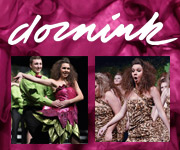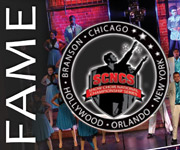
Costuming is one of the most powerful storytelling tools we have as show choir directors, yet it’s often one of the most complex elements to execute well. From the challenges of fitting a group of 30 to 60 (or more!) diverse bodies to the lightning-fast quick changes that can make or break a set, the costume room is where creative vision meets practicality — sometimes with sequins flying.
Having directed and costumed show choirs for over a decade, I’ve come to deeply appreciate the careful planning and heart that go into this often-overlooked element. If you’re new to the world of show choir or simply looking to refine your approach, here’s a candid look into what makes great costuming — and how to avoid the pitfalls that can turn a stunning visual concept into a backstage nightmare.
Fit and Style: Dressing the Whole Ensemble, Not Just the Sample Size
Let’s start with the elephant in the fitting room: no two students are built the same, and costuming needs to work for every single performer. We preach inclusion in our music and our casting — our costume choices need to reflect that same ethos.
Most costume vendors provide standardized sizing charts, and many offer custom measurements. That’s a good start, but the real work happens when the costumes arrive. Even the best-made pieces will need adjustments. Whether you’re working with a parent volunteer who sews, a local tailor, or doing it yourself (bless you), plan for a solid week of fittings and tweaks. A well-fitting costume can mean the difference between a student shrinking into themselves or standing with pride.
It’s also important to offer flexible design elements from the start. For example, if your design includes a crop top or slim-fit dress, consider alternate versions or add-ons for students who may need or want more coverage. The goal is to make sure every student feels confident and dignified, not singled out. Gender expression and personal comfort should also be taken into account. A costume shouldn’t be a barrier to participation — it should be a celebration of it.
The best directors I know prioritize style equity just as much as vocal blend. Every singer on stage should look like they are equally part of the story, even if they’re not all in identical pieces. Matching color palettes, fabric textures, and overall silhouettes can unify the group while allowing for necessary customization.
The Quick Change Conundrum: Costumes vs. Time
A show choir set is essentially a theatrical performance on fast-forward. We don’t have the luxury of long scene transitions or backstage costume crews with clipboards and coffee. We have 20 seconds, maybe 30, and often only a narrow wing and a few costume bags.
When choosing costumes, ease of change must be part of your criteria. Can it come off and on quickly? Are the closures functional under pressure? Are accessories intuitive? I once learned the hard way that a costume with multiple hooks and a side zipper was a no-go — we lost precious seconds and two solos that night. Since then, I have tested every costume idea by timing a quick change. Velcro, magnets, and stretch fabrics have become my best friends.
Layering is also a powerful trick. Think of base costumes that transition with the addition or removal of a jacket, skirt, or sash. You can tell an entirely new story without fully changing outfits, which saves time and keeps the flow uninterrupted. Tearaway pants, convertible dresses, and snap-on accessories are game changers.
The quick-change moment is also a mental reset for students — and a potential stress point. I’ve found that rehearsing quick changes as intentionally as any dance number helps eliminate panic. Use your band room, your hallway, your gym storage closet — rehearse anywhere you can mimic the actual constraints of show day. The smoother the change, the more confident your students feel stepping into the next number.
Costumes as Storytellers: Visual Harmony and Emotional Impact
Every costume tells a story — or at least, it should.
Costumes are not an afterthought; they are a critical part of the narrative arc of your set. Whether you’re telling a cohesive story with a beginning, middle, and end, or presenting a thematic journey through styles and emotions, your costumes should reinforce and elevate the experience.
For example, I once built a set around the idea of transformation. We started in muted, grayscale costumes that slowly evolved into bright, metallic ensembles by the final number. The audience could see the “emotional” journey of our characters through color alone — and the judges noticed too.
Think about your color palette as a tone-setter. Reds and oranges can evoke energy and passion; blues can offer a sense of longing or reflection. Black and white can signify conflict, division, or elegance. Metallics bring drama and pop, but can also feel cold if not balanced with warmth.
Fabric also speaks. Sequins sparkle, but can cheapen a serious ballad. Velvet feels regal but can look heavy under lights. Tulle brings whimsy; leather, edge. The textures you choose carry as much weight as the notes your students sing.
It’s also worth noting how costumes interact with choreography. If your dancers are doing lifts, flowy skirts might get in the way — or they might create a beautiful visual. If your choreography is sharp and percussive, your costumes should echo that with structure and contrast. There is magic when movement and costume work hand-in-hand.
Competition Realities: How Costumes Are Judged
Judges may not score “costume” as its own category, but don’t be fooled — it’s being judged all the same. Costuming plays heavily into overall visual impression, show design, and professionalism.
A polished look communicates preparedness. It says you’ve thought through your show from every angle. Mismatched hems, visible undergarments, malfunctioning accessories — all of these distract from the performance and pull the audience (and judges) out of the moment. On the flip side, a cohesive, thoughtful costume package draws the viewer in and reinforces your artistic vision.
Some competitions do offer a specific costume award, often judged by an artistic or industry professional. These judges look for originality, execution, and how well the costume choices support the storytelling of the set. They are less concerned with high-end materials and more interested in smart design and function.
Here’s a pro tip: Include a one-page “costume overview” in your judges’ packets (if allowed). Briefly explain how the costumes support your set, especially if there’s a theme or narrative. This helps judges appreciate your design intention, even if it’s subtle.
Costumes on a Budget: Getting Creative When Money’s Tight
Of course, all this vision and artistry has to be paid for — and costuming can be a major line item. But a limited budget doesn’t mean you have to sacrifice quality or impact.
Start by assessing what you already have. Many schools build a costume closet over time, and a little creativity can breathe new life into older pieces. Dyeing, altering, or accessorizing can turn last year’s look into this year’s showstopper.
Don’t be afraid to shop outside traditional costume companies. Dancewear outlets, prom sales, clearance racks, even thrift stores can yield amazing finds. A $10 black dress with a custom sash and rhinestones can look like a $200 stage piece under the lights.
If your program has supportive parents or alumni, tap into that talent. Sewing circles, crafting nights, even local college costume departments might be willing to help. And always, always document your process — both to celebrate your team and to make the case for future funding.
Final Stitch: Costumes Are More Than Sparkle
At the end of the day, costumes are about more than just sparkle and style. They help our students step into a role, into confidence, into themselves. They tell a story without saying a word. And they are a crucial part of what makes show choir the unique, joyful, all-in art form that it is.
Yes, they’re time-consuming. Yes, they’re expensive. Yes, they sometimes tear at the worst possible moment. But when a student beams because they feel beautiful, powerful, or finally seen — that’s when you know it’s worth it.
So the next time you’re buried in order forms, drowning in swatches, or panicking over a missing button five minutes before curtain, take a deep breath. You’re not just costuming a show. You’re costuming a story. And it’s one your students will remember for the rest of their lives.











